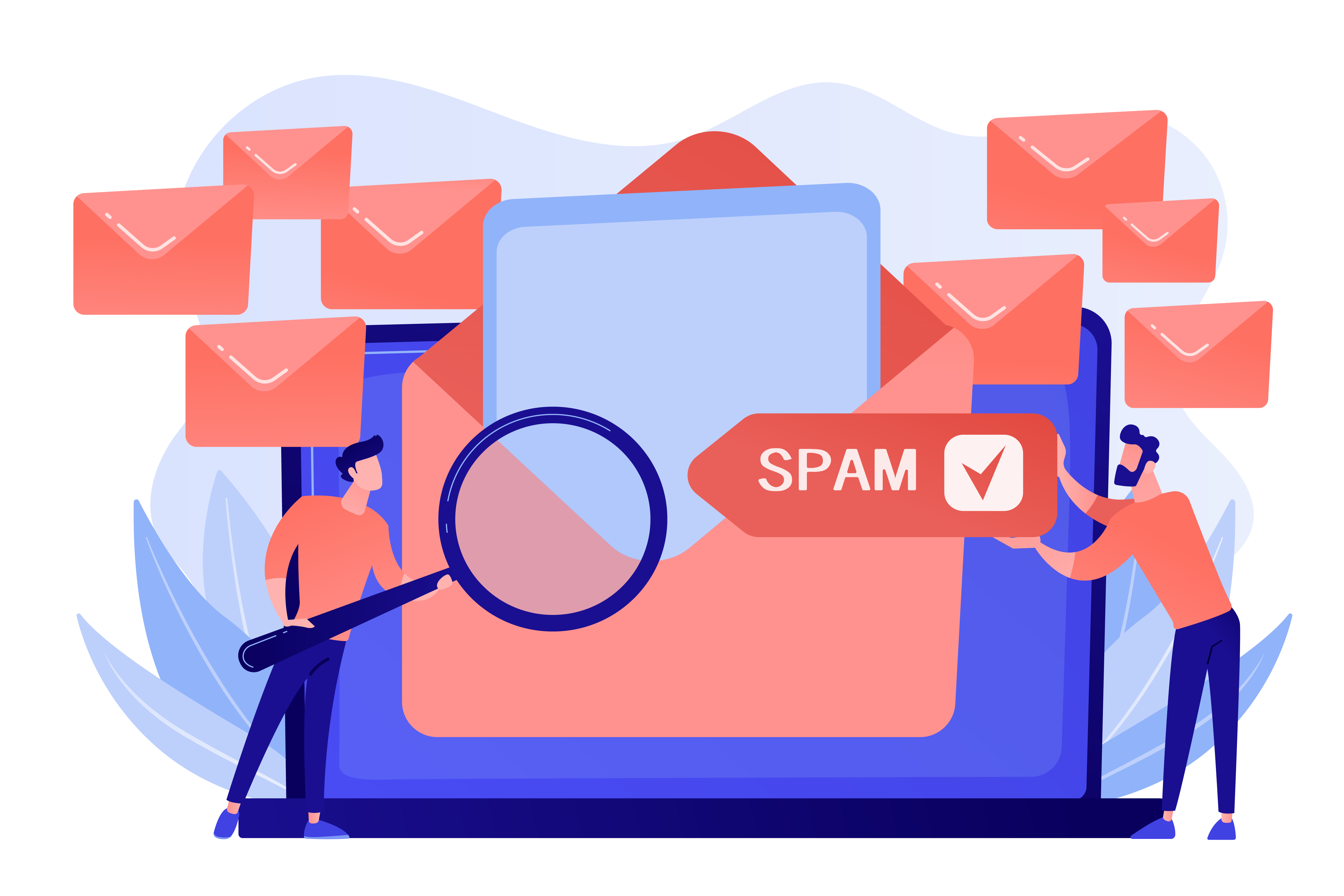· Heybounce · Guides · 7 min read
Is Email Verification Necessary?
Is email verification worth it? Learn how verifying email addresses can improve deliverability, save money, and boost engagement for your marketing campaigns.

In the digital marketing world, emails are the workhorse that keeps businesses running. They foster customer relationships, support marketing campaigns, and drive conversions. But here’s the catch: not all email addresses in your contact list are created equal. Some are valid, while others are misspelled, abandoned, or, worse, completely fake. This raises the question: is email verification necessary? The short answer? Absolutely.
Let’s dive into why email verification is essential and how it can benefit your business, whether you’re just getting started or looking to elevate your email marketing game.
What Is Email Verification?
Before diving into why email verification is necessary, let’s clarify what it is. Email verification is the process of validating an email address to ensure it is active, deliverable, and valid. In simpler terms, it’s a quality control check for your email list.
Using an email verification service like Heybounce helps you identify invalid, inactive, or fake email addresses before you press send on your next campaign.
The Core Benefits of Email Verification
Is verifying emails worth the effort? It certainly is, and here’s why:
1. Improve Deliverability Rates
One of the most critical components of a successful email campaign is ensuring your emails actually make it to your recipients’ inboxes. Email verification helps by:
- Filtering Out Invalid Addresses: Invalid or misspelled addresses lead to bounces. Verifying emails prevents you from sending to these faulty contacts, improving the overall deliverability rate.
- Avoiding Spam Traps: Some fake emails are spam traps that can negatively affect your sender reputation. Verification helps you identify these traps and avoid them.
2. Protect Your Sender Reputation
Email service providers (ESPs) are constantly monitoring your sender behavior. If they notice high bounce rates, your reputation takes a hit, and you risk getting blacklisted. A poor reputation leads to your emails landing in the spam folder, even for legitimate subscribers.
- Low Bounce Rates = High Reputation: By sending only to verified email addresses, you reduce your bounce rate, helping you maintain a healthy sender reputation.
3. Save Money
Many email marketing platforms charge based on the number of emails sent or the size of your list. By cleaning up your email list with verification, you’re able to:
- Cut Down on Costs: You only pay to send emails to real, active addresses.
- Optimize Campaign Efficiency: No wasted effort on dead ends.
4. Increase Engagement Metrics
Engagement is the lifeblood of your email marketing efforts. Metrics like open rates and click-through rates are directly tied to your ability to reach real people who are genuinely interested in your content. Email verification can help:
- Target Active Users: By focusing only on verified, real users, your engagement rates—such as opens, clicks, and conversions—will naturally increase.
5. Prevent Hard Bounces
Hard bounces occur when emails cannot be delivered, often due to incorrect or inactive addresses. Repeated hard bounces can damage your standing with ESPs. Verification helps you remove the problematic addresses before sending your campaign, keeping you in good standing.
Common Myths About Email Verification
With so many different tools and services on the market, it’s natural to feel a little skeptical. Let’s address some of the most common misconceptions:
1. “It’s Only for Large Businesses”
Wrong! Whether you’re a startup with a few hundred contacts or an enterprise with hundreds of thousands, email verification matters. High-quality leads are essential, no matter the size of your business.
2. “It’s Too Expensive”
The truth is, email verification saves money by reducing the cost of sending to dead addresses, improving deliverability, and ultimately making campaigns more efficient. Any upfront costs are recouped through improved performance.
3. “Verification Is a One-Time Task”
Another common myth is that verification only needs to be done once. In reality, email lists decay over time. People change jobs, abandon email accounts, or simply lose interest. Ongoing verification keeps your list clean and current.
How Does Email Verification Work?
The verification process isn’t magic—it’s a series of checks designed to weed out problematic addresses. Here’s a simple breakdown of the process:
- Syntax Check: Identifies basic issues like missing symbols (e.g., “@” or a domain).
- Domain Validation: Verifies that the domain name (e.g., “@gmail.com”) is valid and accepting emails.
- Mail Server Validation: Confirms that the domain has a working mail server.
- Mailbox Check: Determines whether the email address is active and capable of receiving messages.
Each of these steps helps ensure that the email addresses you’re working with are genuine, deliverable, and worth keeping on your list.
The Consequences of Ignoring Email Verification
Ignoring email verification can lead to serious repercussions for your business. Let’s take a closer look at the potential consequences:
1. Higher Bounce Rates
Sending emails to inactive addresses results in a higher bounce rate. A consistently high bounce rate signals poor sending practices to ESPs and can lead to penalties.
2. Poor Engagement Rates
If you’re sending emails to unverified addresses, your campaigns may land in spam folders or go to recipients who aren’t interested. This results in poor engagement metrics—low open and click rates—making it harder for you to accurately evaluate the effectiveness of your marketing efforts.
3. Damage to Brand Reputation
If your emails end up in spam folders too frequently, recipients may perceive your brand as untrustworthy. Worse, they may mark your emails as spam themselves, which further damages your standing.
4. Wasted Resources
Every bounced email or unopened message represents wasted time, effort, and money. Email verification helps ensure that your messages are being seen by the right people.
How to Implement Email Verification: Step by Step
Ready to implement email verification? Here’s a simple guide to get you started:
1. Choose a Trusted Service
Select a reputable email verification service, like Heybounce, that fits your business needs. Look for services with strong security protocols and reliable accuracy.
2. Upload Your Email List
Most services allow you to easily upload your email list. The list will then go through various verification stages, such as syntax, domain, and mailbox checks.
3. Review and Clean
Once the process is complete, review the results. The service will usually provide different categories of email addresses:
- Valid: Safe to send.
- Invalid: Should be removed immediately.
- Catch-All/Risky: These are addresses that may or may not bounce, and you should use your discretion on whether to keep them.
4. Regularly Verify
To maintain a high-quality list, email verification should be an ongoing part of your marketing routine. Regular verification helps ensure you’re only communicating with engaged users.
Tips for Keeping Your Email List Clean
Verification isn’t a one-and-done process—keeping your email list clean is an ongoing endeavor. Here are some tips to help:
1. Use Double Opt-In
Double opt-in is a process where subscribers must confirm their subscription before being added to your list. This ensures that every email is valid and that subscribers actually want to hear from you.
2. Monitor Engagement
Identify users who haven’t interacted with your emails in a long time. Consider creating a re-engagement campaign or removing them from your list if they remain inactive.
3. Remove Hard Bounces Immediately
As soon as a hard bounce occurs, remove the email address from your list. This helps you maintain a high deliverability rate and avoid sending to addresses that are guaranteed to bounce.
4. Segment Your List
By segmenting your email list based on engagement levels, you can focus your efforts on your most active subscribers, thus boosting your open rates and reducing bounces.
Email Verification Tools: What to Look For
Choosing the right email verification tool is crucial. Here are a few features to look for:
- Accuracy: Ensure the tool you choose has a high verification accuracy.
- Data Security: Your email list contains valuable personal data. Make sure your provider has strong encryption and follows security best practices.
- Ease of Use: Look for a tool that integrates seamlessly with your current email marketing platform.
Heybounce is one such tool that checks all these boxes, offering a reliable solution to keep your email list in top shape.
Conclusion: Is Email Verification Necessary?
Absolutely—email verification is not just necessary, it’s vital for the success of your email marketing campaigns. From improving deliverability and engagement metrics to saving money and maintaining your brand’s reputation, verification is a foundational element of effective email marketing.
A verified email list means your campaigns will consistently reach real, interested subscribers—leading to better results, higher ROI, and a stronger connection with your audience.
Ready to see the difference email verification can make? Start today with a trusted email verification service like Heybounce, and take your email marketing to the next level.





